Six Surprises from MEG Montreal 2013
Now that the calendar has flipped to August, the end of summer is officially in […]
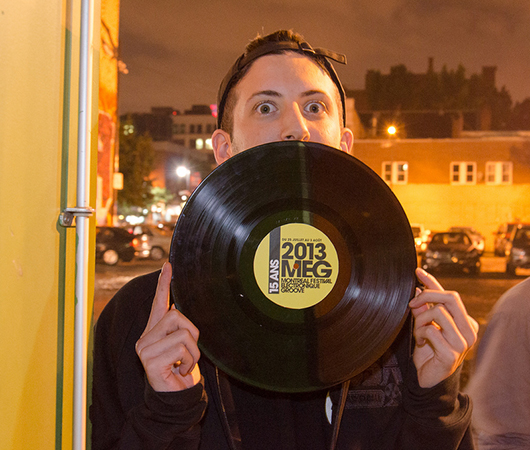
Six Surprises from MEG Montreal 2013
Now that the calendar has flipped to August, the end of summer is officially in […]

Now that the calendar has flipped to August, the end of summer is officially in view, but that hasn’t slowed the festival season one bit. Last weekend, XLR8R was invited to check out the final few days of MEG Montreal, an eclectic happening that had somehow previously eluded our radar, despite the fact that 2013 marked the 15th year of the festival’s existence. We weren’t sure exactly what we’d find when we crossed the Canadian border and dove into the MEG festivities, but after three nights of partying in Montreal, we can now say that the festival offered up a number of surprises, six of which we’ve cataloged below.
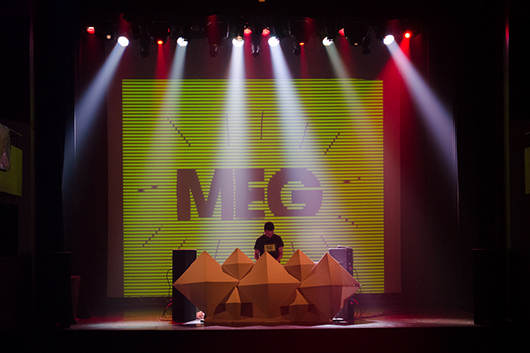
MEG Montreal is, like, a thing.
It sounds a bit silly, but before we received an invite to attend this year’s MEG Montreal, we hadn’t really heard of the festival. Granted, the globe is littered with festivals these days, many of which don’t necessarily make it onto XLR8R‘s radar, but it still seemed odd that a festival—particularly one that’s primarily focused on electronic music—could exist for 15 years without garnering more attention.
Granted, any electronic-music festival in Montreal has to compete with the spectre of MUTEK, which unquestionably casts a long—and internationally recognized—shadow. (Amazingly, MEG has actually been active for one year longer than MUTEK.) And though both MUTEK and MEG happen primarily in smaller venues around Montreal over the course of several days, that’s generally where the comparisons end. Where MUTEK presents an intellectual, highly focused vision that centers around the convergence of electronic music, art, and technology, MEG takes a far more laid-back approach. Its line-up this year was incredibly varied—some might even say scattershot—and the only real emphasis seemed to be on highlighting the “party” portion of the electronic spectrum.
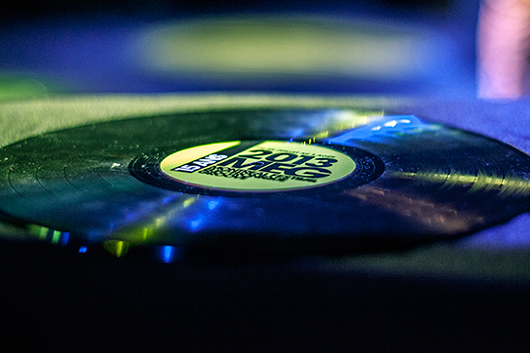
MEG also seems to engage in a lot of partnerships, most notably with the French music scene. It’s likely that grants and funding issues come into play here—as does the obvious cultural connection between France and Quebec—but the 2013 MEG line-up did feature a notably large contingent of French artists. Beyond that, MEG also partnered with Osheaga, one of Canada’s biggest festivals. As it happens, Osheaga—which has a very high profile and was undoubtedly holding center court with the city’s music fans throughout the weekend—was happening concurrently with MEG, and the two events joined forces for Osheaga MEG Pro, a self-described “international music industry gathering.” (In truth, Osheaga MEG Pro ultimately seemed a bit murky to us, as it consisted of very few “industry” events and largely just seemed like a mechanism for people to get a laminated credential and attend a slate of afterparties.) One might think the partnerships would end there, but MEG also teamed up with Préscence Autochone, an event series billed as “Montreal’s First Peoples’ Festival” that celebrates indigenous cultures each year with a film festival, a myriad of family-friendly activities, and, yes, music.
After seeing all of these festival brands operating at the same time, we began to understand how MEG could be lost in the shuffle, even for those residing in Montreal. The fact that MEG didn’t present a concrete concept or offer a narrative through-line also didn’t help matters. That being said, the festival has been going for 15 years, so clearly something is working. MEG is not a small undertaking—this year’s festival ran for an incredible 10 days—and though we were only around for the final weekend, all of the events we saw had solid crowds. Furthermore, those in attendance didn’t seem concerned about the big-picture issues we noticed; they were too busy having fun.
Tommy Kruise
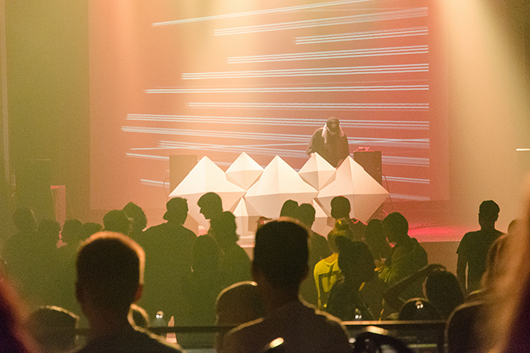
Para One is a slept-on DJ.
In truth, this wasn’t a total surprise; heading into the festival, we certainly didn’t expect a veteran like Para One to be bad. At the same time, we definitely weren’t ready for just how good his set was going to be. The French producer performed on Thursday night at Club Soda on a bill dubbed “Électromania,” which also included sets from local Montreal hero Tommy Kruise (who was weird and funny in the most charming of ways), Sound Pellegrino Thermal Team, and Shlohmo.
Obviously, Para One has an impressive resume. After getting his start as a producer for seminal French hip-hop outfit TTC in the ’90s, he eventually moved on to dance music and became a core member of the Institubes roster. Once that label closed, he founded the Marble imprint with Surkin and Bobmo, and just last year, he issued the excellent Passion LP. Clearly, the man is still operating at a high level and has seemingly shown no signs of slowing down, but despite all of his accomplishments, it often feels like Para One doesn’t quite get his due, or at least isn’t an artist whose every move is tracked with widespread anticipation and excitement. Admittedly, we were guilty of a certain malaise ourselves, as we entered Club Soda expecting a serviceable mix of bright, bouncy, party-starting house—sounds that would be vaguely retro, only delivered with a modern polish.
Para One
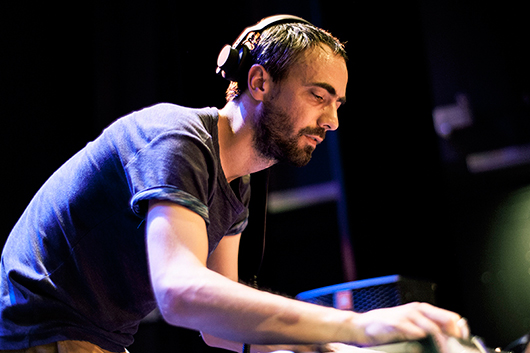
Within the first few songs of his set, it was clear that “serviceable” would be an inadequate way to describe what Para One was doing. Simply put, the guy was a force behind the decks, as he offered up a quick-mixed flurry of tunes that quickly elevated an already-popping dancefloor to an even higher energy level. The set was heavy on the neon-streaked house that often colors the French scene, but it didn’t feel heavy handed and never descended into full-blown electro-house. He also peppered his selections with a handful of hip-hop and R&B hits, and although this technique ran the risk of looking cheap, Para One struck the perfect balance, dropping in only a minute or two of each sing-along anthem before deftly sliding back into house and techno fare. It’s often difficult to be a “fun” DJ without coming across as a hack, but Para One had no trouble with the task.
Shlohmo
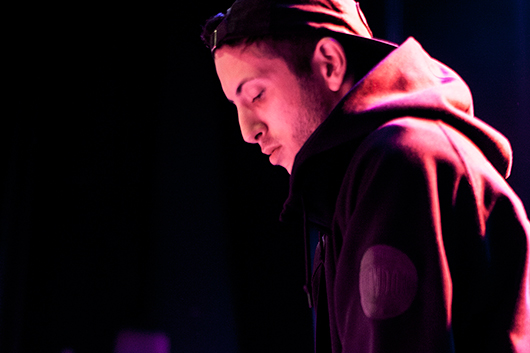
Shlohmo’s set was good. Really good.
This may not seem like a surprise, as XLR8R has been championing the efforts of Shlohmo for several years now. However, there has always been a sort of divergence in his artistic vision, one that clearly separated his thoughtful, introspective original productions from the bombastic, bass-heavy sounds he tended to explore in a club setting. On the one hand, the need for this split has always been obvious—the majority of people aren’t necessarily looking to hear melancholy headphone jams at the club. On the other hand, Shlohmo’s live/DJ sets over the years have occasionally left fans of his production work confused, disappointed, or simply wishing that he’d gone in a different direction. This is something that Shlohmo has certainly been aware of—we actually discussed the matter with him last year at MUTEK and again earlier this year—but if his performance at MEG Montreal is any indication, it appears that he may have resolved the issue.
Shlohmo headlined the Thursday-night show at Club Soda, and though he faced a packed floor, his set wasn’t particularly clubby. At the same time, it wasn’t overly abstract, either. The rhythms were slow, but they didn’t sound sparse. There were elements of hip-hop and R&B—including remixes of a few well-known radio hits—but the music didn’t sound especially “pop.” The songs were largely instrumental, the beats pilfered heavily from modern hip-hop and R&B, and the productions were bathed in a thick syrup of soaring synths and digital haze. It’s difficult to describe exactly what Shlohmo presented, but something along the lines of “epic R&B” seems accurate, as the music—which appeared to consist entirely of his own productions—sounded big, but never seemed trite. Maybe it’s merely a function of the fact that Shlohmo has been performing regularly for a few years now, and has become rather popular in the process; where he once faced pressure to “rock the party,” he now has a solid legion of fans, and they’re ready to go along on whatever journey he wants to lead. Shlohmo’s set was patient, even contemplative at times, but the crowd never grew restless; on the contrary, everyone seemed enthralled with just about everything Shlohmo was doing. It did help that the LA producer has developed a demonstrative on-stage persona—though he wasn’t exactly dancing, Shlohmo did spend a good portion of the set semi-staggering around his rig, throwing his hands in the air, and making intense faces while rolling his eyes into the back of his head. It all sounds a bit goofy now, but in the moment, it simply came across like Shlohmo was getting lost in the music. As it turns out, the audience was willing to do the same.
Poirier
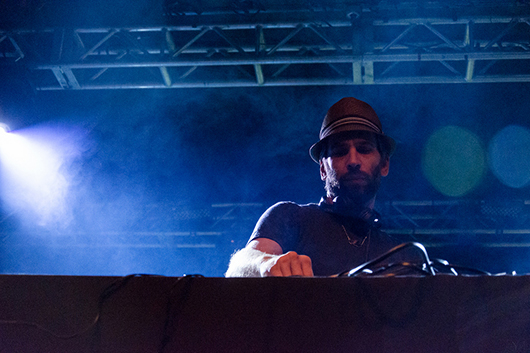
Apparently, normals like dancehall.
On Friday evening, we headed to Montreal’s Place des Festivals for “Electro-Choc,” a free, open-air show that MEG put on in collaboration with Préscence Autochone. Though much of the night featured some fairly mediocre world music, we were excited to see what showcase headliner Poirier would do behind the decks. Much of his 2013 has been focused on his difficult-to-categorize Boundary project, but Friday’s show was a chance to see Poirier serving up dancehall and other kinds of global riddims.
Still, as his set began, we were… concerned, to say the least. Given that the show was free and situated next to one of Montreal’s biggest shopping districts, the audience wasn’t exactly thick with hardcore music fans. There were tourists, families with young children, elderly couples, and lots of random passerby. In short, it was the sort of crowd one might see at the mall, not at a music festival. Beyond that, the soundsystem for the stage wasn’t exactly booming, which is usually a recipe for disaster when it comes to dancehall.
Electro-Choc audience
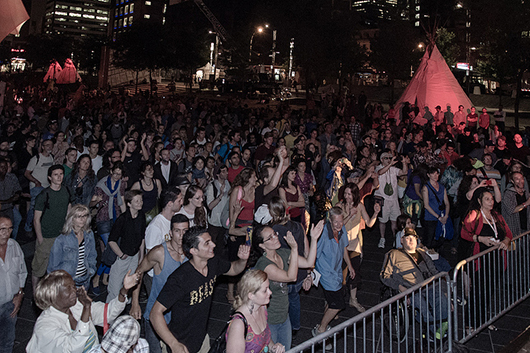
Amazingly though, Poirier started spinning around 10 p.m. and the crowd actually responded. Granted, Poirier was smart enough to keep things upbeat and bouncy, and he did have some help from MC and frequent collaborator Face-T, but we didn’t expect to see moms and people who looked like GAP shoppers getting their groove on to dancehall. Maybe things are different in Montreal. Maybe we were greatly underestimating the appeal of dancehall. Maybe Poirier was just that good. Whatever the explanation, we left the show both confused and impressed.
Machinedrum and Jimmy Edgar played a lot of rap—a lot.
In fairness, it’s always hard to predict what Machinedrum and Jimmy Edgar are going to do, but the two producers—who had performed together as Jets earlier in the day at Osheaga—threw us for a loop on Friday night at MEG. DJing separately at the Sociéte des Arts Technologiques (a.k.a. SAT) as part of a line-up that also included Montreal’s own Seb Diamond and French producer Rone, both Machinedrum and Jimmy Edgar went heavy on the hip-hop, not that the young crowd minded.
Edgar actually began his set with sounds that more closely paralleled his recent production, combining bits of ghetto house and drum-machine-driven techno with upbeat slices of ’80s electro and funk. Following a sluggish start to the evening, Edgar’s dancefloor was quickly swelling, but then he made a drastic left turn and dropped a growling, bass-heavy cut that existed somewhere in the dubstep-trap divide. It wasn’t bad per se, but it was definitely a surprise, and marked the beginning of a sharp change in direction—for the next 20 to 30 minutes, Edgar dove headlong into hip-hop, particularly Southern-style rap. Eventually, Machinedrum took over, and elected to continue in the same direction. His opening salvos were dominated by booming bass notes, rolling hi-hats, and the occasional rap sing-along. The kids in the audience ate it up, and kept partying, even as Machinedrum continued amping the energy level—and the tempo. As the set continued, he gradually segued into juke, footwork, and a lot of jungle, meaning that the SAT was both very loud and intense hyperactive for the duration of his set. Without question, the set was heavy, but the repeated cheers from the crowd demonstrated that Machinedrum had tapped into something potent.
The Hacker
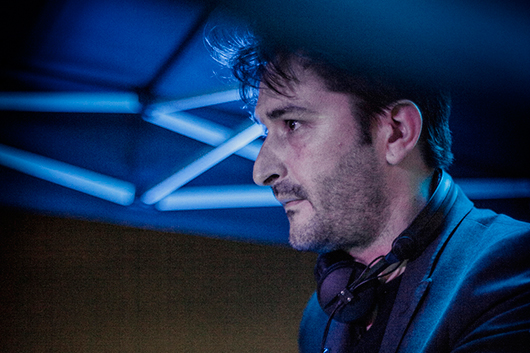
The Hacker and Zombie Nation are not only still alive, they’re also capable of soundtracking a boat party.
MEG Montreal came to a close on Saturday night with a massive boat party, an event which has concluded the festival for the past five years and was touted throughout the weekend as the potential highlight of the festivities. Unlike many boat parties, which often take place in the afternoon or the early evening, the MEG boat powered into the St. Lawrence river after midnight on Saturday, not returning until 3:30 a.m. Thought it was a cold and windy night on the water, nothing could could dissuade partygoers from filling the dancefloor and letting loose.
The MEG boat actually featured two dancefloors, although the one on the lowest deck—with music provided by Turbo Recordings‘ Bordello and Thomas Von Party—ebbed and flowed dramatically throughout the night. Most of the action was happening on the main deck, where a couple of blasts from the past piloted the proceedings. First up was German producer Zombie Nation, who has likely spent the past decade trying to live down his 1999 mega-smash “Kernkraft 400.” Also on the bill was French producer The Hacker; despite his extensive catalog, he remains best known for his collaborations with Miss Kittin, which propelled both of the duo to temporary electroclash stardom in the early ’00s. Without question, both Zombie Nation and The Hacker seemed like unusual choices to headline the closing party of an electronic-music festival in 2013, but no one bothered to tell the crowd—the party was absolutely rammed, with something like 700-800 people in attendance.
MEG Boat
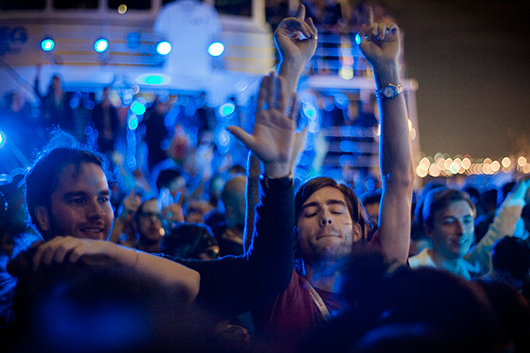
In terms of music, both Zombie Nation or The Hacker stuck to their stylistic guns. The former played a lot of thick and chunky electro-techno hybrids, while the latter went darker and provided a healthy dose of industrial-infused electro sleaze. Neither set was particularly cutting edge, but hearing these guys simply do what they’re known for doing was undoubtedly better than hearing them muddle through new material or experiment with more innovative fare. No one was surprised when Zombie Nation dropped a reworked version of “Kernkraft 400,” just like nobody was shocked when The Hacker closed his set with New Order’s “Blue Monday.” As the boat glided into the dock in the wee hours of Sunday morning, it was clear that people hadn’t come to the party to have their minds blown or experience the bleeding edge of dance music; just as they had been doing throughout the weekend, they came to party, and MEG gave them that chance.

